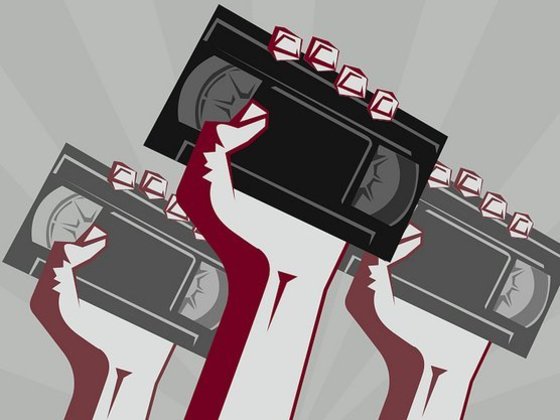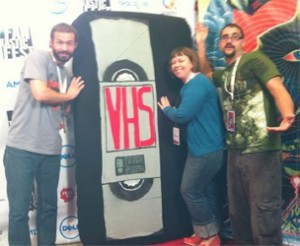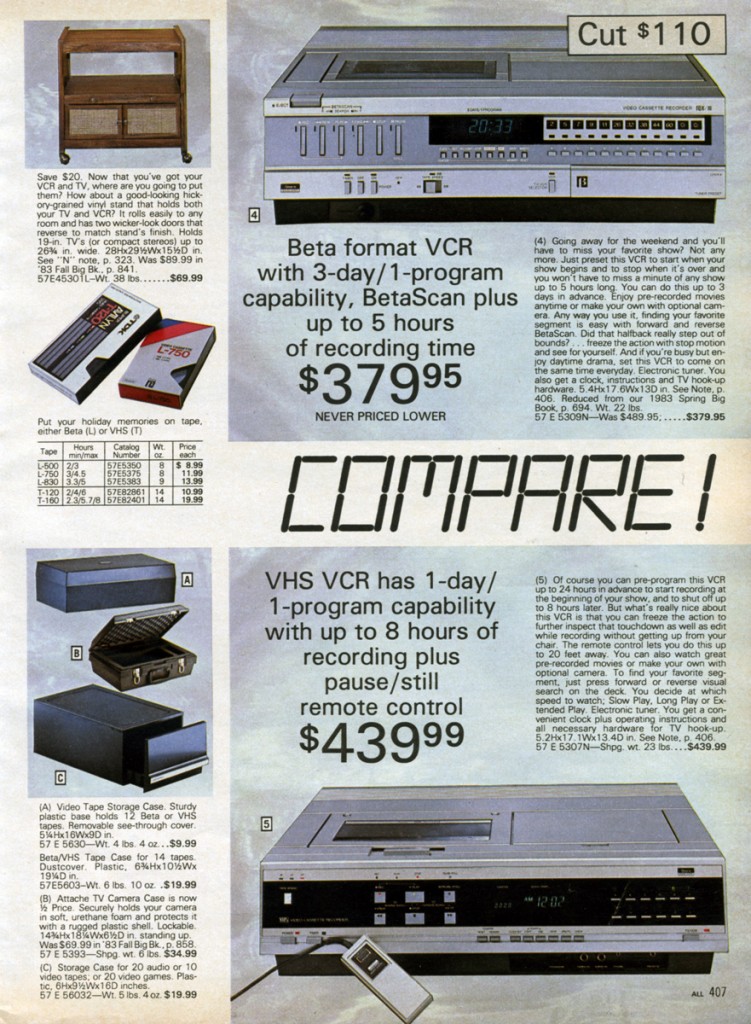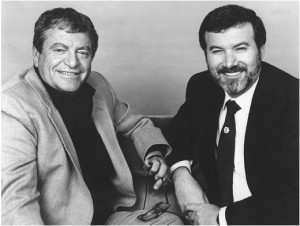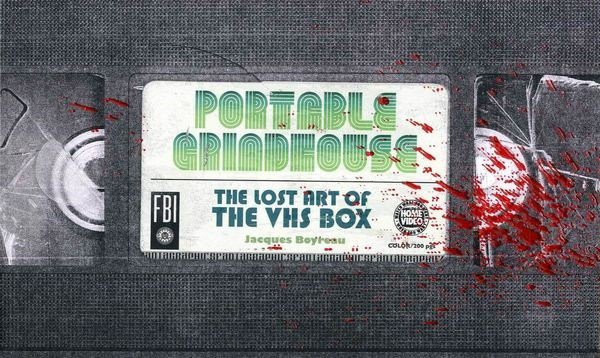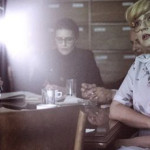VHS MANIA!
VHS MANIA!
The directors of forthcoming home video docs PLASTIC MOVIES REWOUND and REWIND THIS! weigh in on the battle for defunct media supremacy
By Kier-La Janisse
——————-
 From 8-Tracks to vinyl levitra show pill LPs to Atari cartridges to floppy discs to cassette tapes to flexi-discs, dead media is a continual source of inspiration to fans and artists alike. As critic and curator Ed Halter pointed out in the film 8-Bit (Marcin Ramocki and Justin Strawhand’s 2006 documentary about the resurgence of 8-Bit processing in music and art), “the limitations of the one generation become the aesthetic of the next.” It’s a quote I’m fond of repeating, and it never seems to get old, especially when we can see all around us the succession of defunct formats being trotted out to new appreciation in media, art and pop culture (a case in point: most of the aforementioned dead formats have appeared on an Urban Outfitters belt buckle in the us discount viagra overnight delivery last five years).
From 8-Tracks to vinyl levitra show pill LPs to Atari cartridges to floppy discs to cassette tapes to flexi-discs, dead media is a continual source of inspiration to fans and artists alike. As critic and curator Ed Halter pointed out in the film 8-Bit (Marcin Ramocki and Justin Strawhand’s 2006 documentary about the resurgence of 8-Bit processing in music and art), “the limitations of the one generation become the aesthetic of the next.” It’s a quote I’m fond of repeating, and it never seems to get old, especially when we can see all around us the succession of defunct formats being trotted out to new appreciation in media, art and pop culture (a case in point: most of the aforementioned dead formats have appeared on an Urban Outfitters belt buckle in the us discount viagra overnight delivery last five years).
The latest craze: VHS. While some people have clung fervently to their VHS tapes and players over the years, and never stopped believing in its viability and relevance, there’s no doubt that the general populace is being swept up in this VHS mania, spurred on by the recent announcements of at least three documentaries focusing on the home video boom of the 80s – Mike Malloy’s Plastic Movies Rewound, Josh Johnson, Carolee Mitchell and Christopher Palmer’s Rewind This! A VHS Love Story and Mark Hartley’s latest, Electric Boogaloo: The Wild, Untold Story of Cannon Films. Adding to the zeitgeist have been articles in The New York Times, a regular ‘Dead Format’ column in Fangoria Magazine, countless genre blogs and the title of this year’s Sundance hit, the anthology film V/H/S.
Mike Malloy (MM), director of the forthcoming Plastic Movies Rewound and Josh Johnson (JJ), co-director of Rewind This! both weigh in on the rhyme and reason of the VHS revival.
————————-
What, in your opinion, is fuelling the current VHS nostalgia wave?
MM: As physical media become increasingly irrelevant to many households, the reasons for owning http://www.spectacularoptical.ca/2021/02/levitra-online-overnight-delivery/ physical media become different. If you already stream or use VOD for your regular movie viewing, you can start buying physical media for other reasons — i.e., collectibility or eye-catching packaging.
JJ: I think there are two mindsets fueling the resurgence. The first would be a desire on the part of those who grew up in the early-video era to have a film experience that more accurately recreates a time in their lives that was thrilling. The almost intimidating weight of a VHS tape and the uniquely vibrant cover art they were housed in sparked the imaginations of so many young consumers. The second would be the realization that a staggering wealth of interesting and original content is more or less trapped on VHS with no looming release on a newer format. This lends a massive number of VHS tapes an archival value that many wouldn’t have anticipated when the shift to digital media originally began.
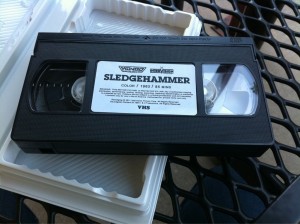 A few years ago it was announced that VHS tapes had ceased production for good, But now new films are coming out with special edition VHS releases. Is VHS officially back in production again or is this pre-existing stock being used?
A few years ago it was announced that VHS tapes had ceased production for good, But now new films are coming out with special edition VHS releases. Is VHS officially back in production again or is this pre-existing stock being used?
JJ: I would say the death knell was not premature but was possibly misunderstood by the public at large. VHS tapes are still a product being released into the market place. A variety of industries such as small security camera companies still use the format. Movies are no longer released on tape and all large-scale production has closed down but VHS isn’t, nor has it ever been, completely dead. That said, I think the practice of releasing new films on VHS will probably remain a niche market for collectors. It seems very unlikely that VHS would actually become a major player in the home video arena in the future.
MM: I remember reading that as a ’08 news article too and have been wondering the same ever since Intervision’s Sledgehammer VHS release last year. One distributor I know is using old stock for its collectible new VHS releases. And another I know, Massacre Video, says they’ve been using a company named Magtek for their VHS runs, but that Massacre’s next release will be the last video run that Magtek does before discontinuing the option.
Can you give the average reader a rundown of the VHS vs. Betamax war?
JJ: The battle was faught by Sony and JVC, both of whom wanted dominance over the home video market. Sony’s Betamax featured superior quality image and sound but JVC’s VHS featured a longer recording time. It was a battle that raged for many years but in the end the appeal of “more bang for the buck” won out.
MM: Obviously, it was the first great format war, paralleled more recently by Blu-Ray versus HD-DVD. From what I can tell, Sony’s fatal mistake that meant Betamax ultimately captured less market share than VHS was their stubborn refusal, for way too long, to offer a recording speed that lessened the quality but allowed two hours’ worth of recording (per tape). If they had offered that earlier, VHS would have been the loser.
What other formats were there besides VHS and BETA and do these get covered in your film?
JJ: There were several earlier home video machines that will be covered but the introduction of VHS and BETA is definitely where the in-depth focus of the film begins. We’ll also be covering the formats that followed, such as laserdisc, DVD, Blu-Ray, etc. The initial home video boom began with videotape and it established the model that later formats would follow. We’ll be covering the various formats but focusing on mass-market videotape as a guiding force.
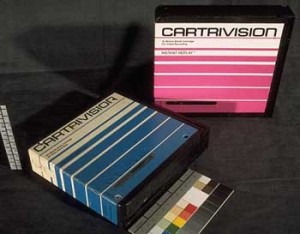 MM: Cartivision, Selectavision/CED, 8mm digest movies and maybe even U-matic will be covered in PLASTIC MOVIES REWOUND. The obscure formats fascinate the hell out of me — especially Cartrivision, which rented tapes of studio movies to consumers as a Sears-only exclusive in the early ’70s. But there were so many reasons it became a disaster — disintegrating tape, no stand-alone decks (you had to buy it as part of a console TV) and an inability to rewind the Sears rental tapes. So if you missed the ending, you missed the ending!
MM: Cartivision, Selectavision/CED, 8mm digest movies and maybe even U-matic will be covered in PLASTIC MOVIES REWOUND. The obscure formats fascinate the hell out of me — especially Cartrivision, which rented tapes of studio movies to consumers as a Sears-only exclusive in the early ’70s. But there were so many reasons it became a disaster — disintegrating tape, no stand-alone decks (you had to buy it as part of a console TV) and an inability to rewind the Sears rental tapes. So if you missed the ending, you missed the ending!
Mike – can you explain why you refer to the home video boom as a “lawless, wild-west time for the film industry”?
MM: That characterization pertains primarily to low-budget filmmakers and lower-tier distributors. The video labels tried all sorts of trickery to bilk the filmmakers, and the filmmakers sometimes got creative in fighting back — or finding ways around conventional distribution altogether. Plastic Movies Rewound has some great anecdotes of that nature.
How did home video change the way films were made?
MM: You no longer had to blow up to 35mm. You could just shoot 16mm, do a telecine, stay in the domain of analog video, and then never even strike a print. And of course, some didn’t even bother shooting 16, hence the “shot on shit-e-o” movement (which is not my term; I’m fascinated by ’80s features shot on analog video).
JJ: It changed the way films were made in a few interesting ways. It created an opportunity for companies to finance their movies by pre-selling the video rights to various countries and territories. This idea already existed in the realm of film distribution but video became another market that could be pre-sold. Thus, shooting budgets for motion pictures started coming together based on the expectations of future video sales and in many cases represented the largest investment in a particular film. It also created an inexpensive way for people to make movies without having to process film or operate complex equipment. Video cameras became a great equalizer in enabling filmmakers without considerable resources to make and release product into many of the same outlets as the blockbusters of the time.
Who do you consider to be some of the major movers and shakers of the home video boom, the entrepreneurs who really shaped how it all played out?
MM: Certainly there was Charles Band of Empire/Full Moon, and Golan-Globus of Cannon. But those are home video kingpins that are already household names with cinephiles, and I’m going to let someone else tell their stories. I’m more interested in the less-remembered Andre Blay-type figures.
JJ: Akio Morita at Sony and Kenjiro Takayanagi at JVC can be regarded as the individuals who shaped the home video industry into something that the whole world would adopt. While they are not individually responsible for the creation of the technology, their vision of how it could be used in the average home is what drove it into existence and 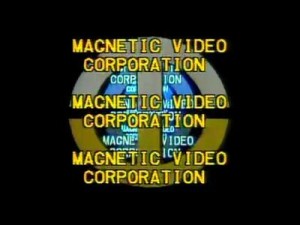 out into the light. Andre Blay can be considered responsible for creating the idea of the video rental operation with his company Magnetic Video. He had the brilliant idea to license popular titles from Hollywood (specifically 20th Century Fox) and distribute them on video. This unprecedented concept changed the perception of how home video technology could be used. Inspired by this concept, Charles Band later licensed a string of low-budget, independent films for small sums of money and founded Media Entertainment. In doing this, Band paved the way for smaller companies to compete with the studio system on the video rental shelf. These developments, the idea of a video-recording machine in the average home as well as the new market for films both big and small, formed the groundwork the home video boom was built on. There were loads of people who helped shape the industry, and we’ve interviewed more than 60 individuals so far for the film, but I definitely think you can look at those figures as the ones who really innovated with the core components of the phenomenon.
out into the light. Andre Blay can be considered responsible for creating the idea of the video rental operation with his company Magnetic Video. He had the brilliant idea to license popular titles from Hollywood (specifically 20th Century Fox) and distribute them on video. This unprecedented concept changed the perception of how home video technology could be used. Inspired by this concept, Charles Band later licensed a string of low-budget, independent films for small sums of money and founded Media Entertainment. In doing this, Band paved the way for smaller companies to compete with the studio system on the video rental shelf. These developments, the idea of a video-recording machine in the average home as well as the new market for films both big and small, formed the groundwork the home video boom was built on. There were loads of people who helped shape the industry, and we’ve interviewed more than 60 individuals so far for the film, but I definitely think you can look at those figures as the ones who really innovated with the core components of the phenomenon.
Josh – I notice on your website a picture of “Dormarth’s attic” – I remember reading a fanzine he did years ago from when Zack Carlson was still programming All Freakin’ Night. How did Dormarth become part of the film? Who is Dormarth?
JJ: Dormarth is a fascinating gentleman from Olympia, WA who has devoted a large portion of his life, his finances, and his home to the preservation of horror movies on VHS. His attic is stocked floor to ceiling with thousands of tapes, all within the genre he loves. There are categories and sub-categories, each shelf meticulously arranged. He publishes a fanzine called “Dormarth’s Horror Review” which is a collection of write-ups on various movies he has watched as well as interviews with some of his heroes. I was introduced to Dormarth through my friend Zack Carlson who is an intensely devoted VHS warrior as well as one of the greatest living humans.
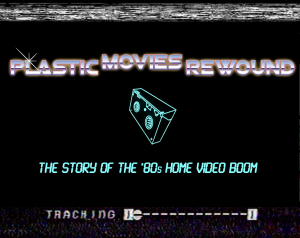 The home video boom must have also created a lot of work for budding graphic designers.
The home video boom must have also created a lot of work for budding graphic designers.
MM: The era’s design elements I most like — and I’m primarily speaking of the company-logo intros here — are grids and video echoes. The art design of Plastic Movies Rewound is replete with video echoes and glowing grids!
JJ: Video box art is almost a story unto itself. There were a lot of smaller companies that would produce a poster or video box mock-up first, then sell the film. This meant there would be far more artwork generated than there were films. When you think of the glut of video content that was being unleashed during the height of the boom you can start to imagine how much artwork was being produced. The explosion of video meant that films were being sold for theatrical release and home release, in many cases the video box using different artwork than the other marketing campaigns. Factor in the number of different territories that video rights were sold to and you have exponentially more design concepts for just one particular film. The artwork created to promote VHS cassettes is arguably the most beloved and passionately missed piece of the VHS era.
What are your favourite video store memories? Do you remember any video boxes that just leapt out of the shelf at you, or video boxes that became engrained in your psyche because they were verboten by parental concerns?
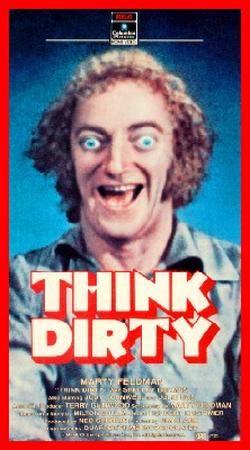 JJ: I used to spend hours wandering the aisles of the video store. My older brother and I would obsess over every possible option and read the back of every box. We’d debate the potential merits of a string of selections until we narrowed it down to a handful of titles. This is when the hard decisions were made, things such as mood and time of day were considered heavily. Eventually we’d end up with our choices and go home to watch them. We were going to be back in a matter of days but it was still crucial that we agonize over our decisions every time we set foot in the video shop. When I was old enough to walk by myself or ride my bike to the video store, I would often go and lose myself for a few hours looking at the box art. I wouldn’t rent anything, just walk around taking comfort in the imaginary experiences the artwork would create. I remember being frightened by the front cover of The Gate with a creature clawing its way up from the ground, red eyes staring out from the dark. I was terrified by the artwork for House which featured a rotting corpses hand floating in front of a doorway with its brittle, bony finger acting as a key in the lock of the door. [ed note: Johnson later emailed me with the following clarification: “Looking at the House box now I realize the finger is not entering a keyhole but merely pressing the doorbell. This would also tie in with the tagline from the House standee: “Ding dong, you’re dead”. For all these years I thought the hand was unlocking the front door for menacing reasons.”] I was inexplicably gripped by fear every time I glimpsed Marty Feldman’s bug-eyed face on the front of Think Dirty and would avoid that section of the store. I had a fascination with breasts even as a prepubescent which meant that I would excitedly look at the one-two punch of Takin’ It Off and Takin’ It All Off which bizarrely showcased illustrations of women with their nipples covered but illustrations of exposed breasts in the lettering of the titles. I remember being confused by why it would only be acceptable to show nipples if they were floating around removed from a woman. My early VHS viewing was heavily restricted by my parents but there was no restriction from what I could look at on the video shelf. Half the fun of going to rent a movie was the experience I would have in my own head.
JJ: I used to spend hours wandering the aisles of the video store. My older brother and I would obsess over every possible option and read the back of every box. We’d debate the potential merits of a string of selections until we narrowed it down to a handful of titles. This is when the hard decisions were made, things such as mood and time of day were considered heavily. Eventually we’d end up with our choices and go home to watch them. We were going to be back in a matter of days but it was still crucial that we agonize over our decisions every time we set foot in the video shop. When I was old enough to walk by myself or ride my bike to the video store, I would often go and lose myself for a few hours looking at the box art. I wouldn’t rent anything, just walk around taking comfort in the imaginary experiences the artwork would create. I remember being frightened by the front cover of The Gate with a creature clawing its way up from the ground, red eyes staring out from the dark. I was terrified by the artwork for House which featured a rotting corpses hand floating in front of a doorway with its brittle, bony finger acting as a key in the lock of the door. [ed note: Johnson later emailed me with the following clarification: “Looking at the House box now I realize the finger is not entering a keyhole but merely pressing the doorbell. This would also tie in with the tagline from the House standee: “Ding dong, you’re dead”. For all these years I thought the hand was unlocking the front door for menacing reasons.”] I was inexplicably gripped by fear every time I glimpsed Marty Feldman’s bug-eyed face on the front of Think Dirty and would avoid that section of the store. I had a fascination with breasts even as a prepubescent which meant that I would excitedly look at the one-two punch of Takin’ It Off and Takin’ It All Off which bizarrely showcased illustrations of women with their nipples covered but illustrations of exposed breasts in the lettering of the titles. I remember being confused by why it would only be acceptable to show nipples if they were floating around removed from a woman. My early VHS viewing was heavily restricted by my parents but there was no restriction from what I could look at on the video shelf. Half the fun of going to rent a movie was the experience I would have in my own head.
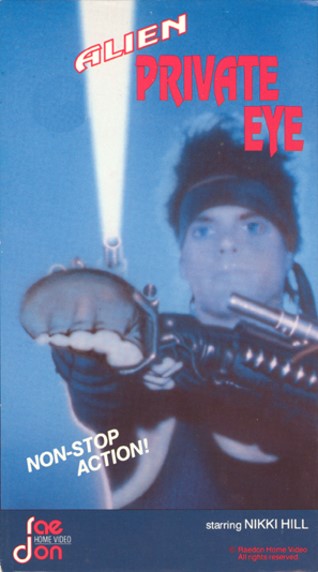 MM: The first video store I frequented regularly (and by “regularly” I mean “daily”) was one that shared a space with a laundry. And the several rows of horror videos were nearest the laundry, where the dryers gave off a noticeable warmth. And each row of horror — they weren’t alphabetical — got more shocking and extreme as you got closer to the laundry side. So as the rows felt warmer and warmer, and the horror videos got more and more transgressive and mean-spirited, you felt as if you descending into deeper rungs of Hell. The big-box release of Make Them Die Slowly was my “car wreck”, inasmuch as I was repulsed but couldn’t look away.
MM: The first video store I frequented regularly (and by “regularly” I mean “daily”) was one that shared a space with a laundry. And the several rows of horror videos were nearest the laundry, where the dryers gave off a noticeable warmth. And each row of horror — they weren’t alphabetical — got more shocking and extreme as you got closer to the laundry side. So as the rows felt warmer and warmer, and the horror videos got more and more transgressive and mean-spirited, you felt as if you descending into deeper rungs of Hell. The big-box release of Make Them Die Slowly was my “car wreck”, inasmuch as I was repulsed but couldn’t look away.
The very first video store I set foot in as a kiddo had a poster for Street Trash on the wall. After seeing that, I was — no fooling — afraid to flush the commode for a while. I’d flush and run. (But then again, I was the kid who was seeing the school counsellor for being scared of the safety films they showed in class. “Overly active imagination” was the shameful diagnosis.)
Everyone has their favourites, but what is your favourite home video label and why?
MM: Raedon Home Video, head and shoulders above all the others. With a couple notable exceptions, Raedon’s films were cases of “I can’t believe this was ever made — to say nothing of released!” Feelin’ Screwy, Alien Private Eye, Game of Survival — the last two of which starred Chippendales dancer Nikki Fastinetti. Raedon claimed bankruptcy and didn’t pay its filmmakers, but then some of their titles turned up unauthorized on the MNTEX label without the filmmakers’ knowledge. David Rimawi, an employee of Raedon, went on to co-found Asylum Entertainment, producers of such mockbusters as Transmorphers and Snakes on a Train.
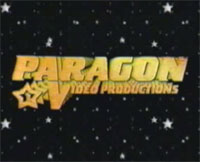 JJ: I’m extremely fond of Paragon. I feel they did the best job of depicting the tone of a film while still offering a vision beyond what any film could possibly provide. Their covers could be over the top but never to the extent that you would dismiss them outright. They would display a world that you knew couldn’t exist but there was something about the cohesiveness of the design that would make you ignore the implausibility of the film delivering the goods and rent it anyway. They also showed a unity to the type of film they released that is difficult to put your finger on. Paragon releases feel like they belong together even though they are often extremely different. Their contribution to the VHS story continues to resonate with me.
JJ: I’m extremely fond of Paragon. I feel they did the best job of depicting the tone of a film while still offering a vision beyond what any film could possibly provide. Their covers could be over the top but never to the extent that you would dismiss them outright. They would display a world that you knew couldn’t exist but there was something about the cohesiveness of the design that would make you ignore the implausibility of the film delivering the goods and rent it anyway. They also showed a unity to the type of film they released that is difficult to put your finger on. Paragon releases feel like they belong together even though they are often extremely different. Their contribution to the VHS story continues to resonate with me.
————————–
Plastic Movies Rewound OFFICIAL WEBSITE
Rewind This! OFFICIAL WEBSITE

 March 1, 2012
March 1, 2012  No Comments
No Comments
